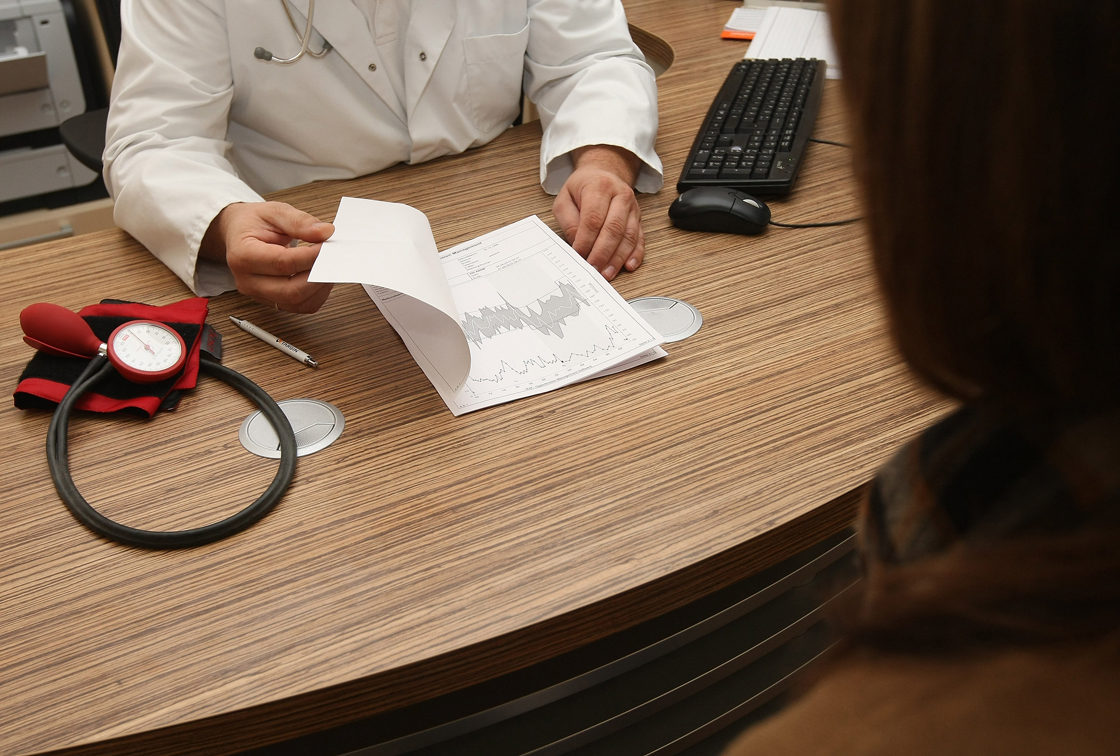TORONTO – Right away, Andrea Bain knew something was wrong. On a January morning in 2011, the 36-year-old woman was lying in bed, tossing and turning.

She had already made her trip to the gym, showered, phoned her mom and drank a protein shake – her daily routine. But she was exhausted. And while trying to rest in bed, she heard and felt a sound.
“It felt like a cherry bomb, like a pop. I never had anything like that happen to me before and my entire body was pins and needles,” Bain, a TV personality, recalled to Global News.
She called 911 and while waiting, she felt the entire right side of her body go numb. Her lips tingled, her nose stuffed up.
“It’s like it was happening in slow motion but also very quickly. In my mind, I didn’t know what was happening,” she said.
Bain, while at the prime of her physical health, had a stroke. At the hospital, specialists took one look at her blood pressure – it was through the roof.
READ MORE: Some Canadians misunderstanding stroke recovery process, report says
Stroke is conventionally most common in seniors over the age of 70, but a new report is warning: Canadian stroke patients are getting younger, with rates steadily increasing in people between 24 and 64 years old.
The profile of the quintessential Canadian stroke patient is also changing: they’re juggling surviving their stroke with managing chronic diseases, such as high blood pressure, diabetes and heart disease, according to a new Heart and Stroke Foundation report released Thursday.
- What is a halal mortgage? How interest-free home financing works in Canada
- Capital gains changes are ‘really fair,’ Freeland says, as doctors cry foul
- Ontario doctors offer solutions to help address shortage of family physicians
- Budget 2024 failed to spark ‘political reboot’ for Liberals, polling suggests
“When most people think of stroke, they think of the elderly,” Dr. Rick Swartz, a Sunnybrook Hospital stroke neurologist and researcher, told Global News.
He specializes in stroke in young Canadians, and even stroke-related concerns in pregnancy. Patients could be babies, to young adults.
“A lot of people say, ‘This could never happen to me.’ Essentially, we’re starting to recognize stroke more commonly in young people. It can happen at any age,” Swartz warned.
READ MORE: Canadians living longer, but managing heart health needs improvement
Stroke care has improved in Canada, and so, death rates from the incident are decreasing. But because there are more baby boomers heading into their golden years, and because the country is seeing record rates of obesity, heart disease and diabetes in younger populations, the rates of stroke are rising.
There are an estimated 50,000 strokes in Canada each year, or one every 10 minutes, according to the HSF report.
The report’s data suggests that over the past decade, strokes in people in their 50s have increased by 24 per cent, and in those in their 60s, by 13 per cent.
What’s more troubling: international data suggests that stroke rates for younger people between 24 and 65 are slated to double within the next 15 years.
READ MORE: Stroke patients’ health outcomes influenced by spouse’s optimism
In Canada, stroke survival rates differ depending on where you live in the country. In Quebec, Alberta, Ontario and B.C., for example, your odds are better. Death rates range from about 15.9 to 17.9 per 100,000.
In Newfoundland, on the other end, death rates sit at about 30 per 100,000.
Swartz said this has a lot to do with access to specialists, recovery programs and proactive provincial strategies.
Two-thirds of Canadian stroke patients are living with one or more chronic diseases. That can make recovery tricky.
READ MORE: 5 lifestyle changes to improve your heart’s health
“There are a number of different issues that need to be addressed when treating patients. Now, it’s a matter of treating not only the stroke and recovery, but finding and treating all of the other underlying health factors – irregular heartbeat, clots in arteries, mood disorders, sleep disorders, high blood pressure,” Swartz listed.
“These are a lot of things to deal with for people who are just getting their heads around what just happened to them,” he explained.
For Bain, her stroke was a second chance at life. Despite being a healthy, active woman, she was diagnosed with high blood pressure – a chronic disease she’ll tend to for the rest of her life.
Now, she takes her medication daily, she carefully reads nutritional labels at the grocery store to watch for sodium and she monitors her blood pressure.
READ MORE: What you should be eating to lower your blood pressure
“It’s been eye-opening. I’m fine now, but I feel like I was a ticking time bomb because I didn’t know I wasn’t doing well,” Bain told Global News.
She advises young Canadians to go for their annual check-up. Had she stopped at the doctor’s office, her family doctor could have easily checked her blood pressure and stopped her condition from worsening.
“Don’t assume that because you look good, and you’re a size four that everything is good on the inside. Pay attention to things,” she said.
READ MORE: Why measuring your blood pressure matters – even for teens
Swartz also doles out that advice: listen to your body. Key signs of stroke include a sudden loss of strength, difficulty speaking or seeing, or a feeling of numbness.
The sooner someone who is experiencing stroke gets to hospital and receives treatment, the better their chances of recovery.
Read the full report here. Watch one of the organization’s new ad campaigns here:
carmen.chai@globalnews.ca
Follow @Carmen_Chai



Comments